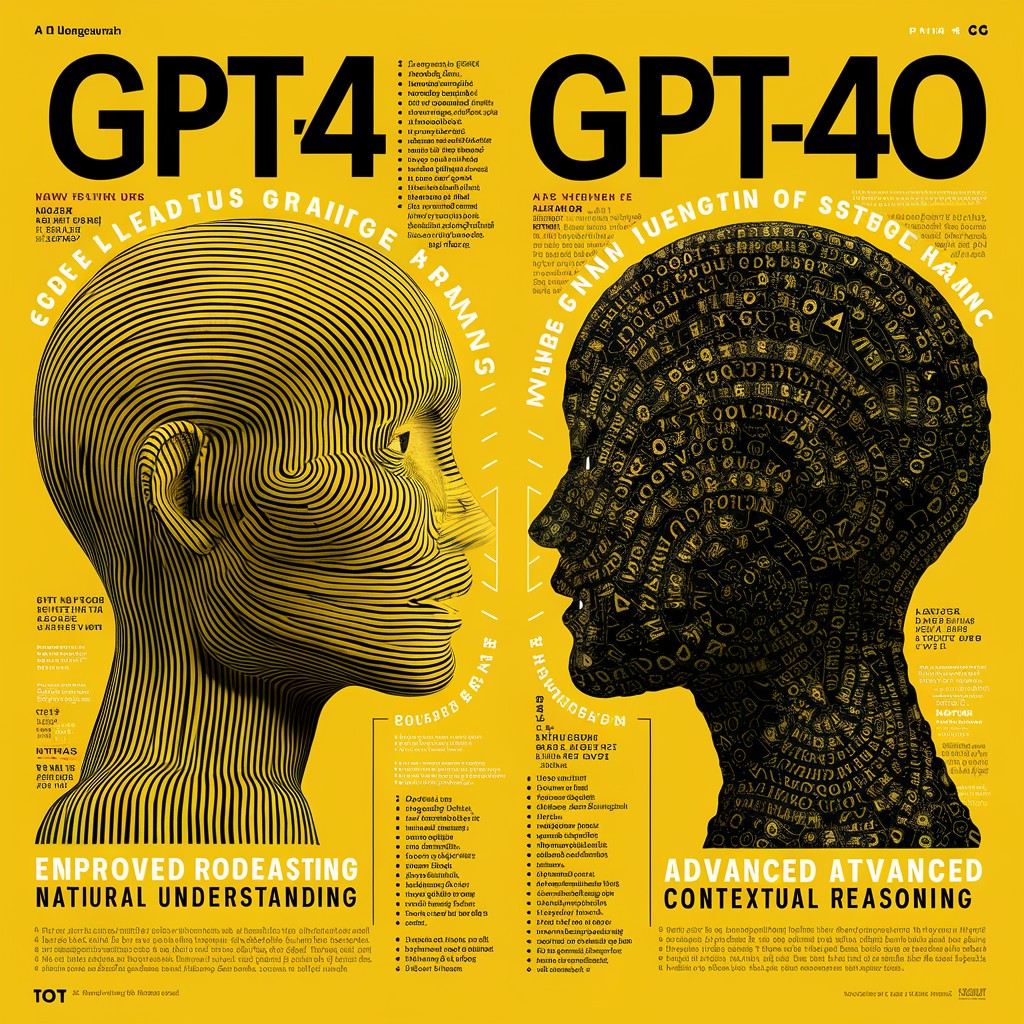The artificial intelligence and machine learning world has witnessed rapid advancements, with OpenAI at the forefront of these innovations. One of the latest developments is the release of GPT-4o, an optimized version of the highly acclaimed GPT-4. Let’s delve into the key updates in GPT-4o, compare it with its predecessor, and present a comparative table highlighting the differences.
Introduction to GPT-4
GPT-4, the fourth part of the Generative Pre-trained Transformer model series, marked a significant leap in natural language processing. Known for its enhanced contextual understanding, coherence, and versatility, GPT-4 has been widely adopted across various industries for tasks such as content creation, language translation, and conversational AI. Its architecture, built on the transformer model, allows it to process and generate human-like text.
Emergence of GPT-4o
Recognizing the need for further optimization, OpenAI introduced GPT-4o. The “o†in GPT-4o stands for “optimized,†reflecting the improvements and refinements made to enhance the model’s performance, efficiency, and usability. These updates are geared towards addressing the limitations of GPT-4 and providing users with a more robust and efficient AI model.
Key Updates in GPT-4o
Enhanced Performance and Speed: GPT-4o’s primary update is its improved performance and processing speed. OpenAI has implemented optimization techniques that allow the model to generate responses faster without compromising quality. This improvement is crucial for daily applications requiring real-time interactions, such as chatbots and virtual assistants.
Reduced Latency: GPT-4o significantly reduces latency, providing a smoother and more responsive user experience. This reduction in latency is particularly beneficial for applications where quick response times are essential, such as customer support and interactive applications.
Improved Accuracy and Precision: GPT-4o has further refined accuracy and precision. The model has undergone extensive fine-tuning, resulting in more accurate and contextually relevant responses. This enhancement is vital for tasks requiring high accuracy, such as medical diagnosis assistance and legal document analysis.
Better Handling of Ambiguity: GPT-4o demonstrates an improved ability to handle ambiguous queries. It employs advanced contextual analysis to disambiguate user inputs, producing more coherent and relevant responses. This feature is particularly useful in complex conversational scenarios where clarity is paramount.
Enhanced Multimodal Capabilities: GPT-4o extends its capabilities beyond text by incorporating enhanced multimodal functionalities. It can process and generate text, images, and other forms of media, making it a versatile tool for multimedia content creation and analysis.
Resource Efficiency: Resource efficiency is another critical update in GPT-4o. The model has been optimized to use computational resources more effectively, decreasing the overall cost of deployment and operation. This efficiency makes GPT-4o more accessible to a broader range of users, including small businesses and individual developers.
User-Friendly Interface: GPT-4o features a more user-friendly interface, making it easier for developers to integrate and utilize the model in their applications. Improved documentation and support enhance the user experience, facilitating smoother implementation and troubleshooting.
Comparative Analysis: GPT-4 vs. GPT-4o
To better understand the advancements in GPT-4o, let’s compare it with GPT-4 across several key parameters:
Conclusion
GPT-4o represents a significant evolution in AI language models, building on the robust foundation of GPT-4 and introducing key updates that enhance performance, accuracy, and usability. Its reduced latency, improved handling of ambiguity, and enhanced multimodal capabilities make it a versatile tool for various applications. Moreover, the optimized resource efficiency and user-friendly interface broaden its accessibility, allowing more users to leverage its advanced features. As AI advances, models like GPT-4o demonstrate the potential for ongoing refinement and improvement. These updates address the limitations of previous versions and pave the way for new and innovative uses of AI in various fields. Whether in customer service, content creation, or complex data analysis, GPT-4o is a testament to the relentless pursuit of excellence in artificial intelligence.
In conclusion, transitioning from GPT-4 to GPT-4o marks a notable step forward in AI language models. By enhancing performance, reducing latency, and improving accuracy, GPT-4o sets a new standard for what can be achieved with AI-driven text generation. As users & developers continue to explore its capabilities, the impact of GPT-4o is poised to be both profound and far-reaching, shaping the future of AI interactions and applications.
Sources
https://openai.com/index/gpt-4/
https://openai.com/index/gpt-4-research/
https://arxiv.org/abs/2303.08774
https://openai.com/index/hello-gpt-4o/
The post GPT-4 vs. GPT-4o: Key Updates and Comparative Analysis appeared first on MarkTechPost.
Source: Read MoreÂ

